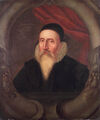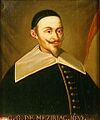Template:Selected anniversaries/February 25: Difference between revisions
No edit summary |
No edit summary |
||
| Line 15: | Line 15: | ||
File:Friedrich Reinitzer.jpg|link=Friedrich Reinitzer (nonfiction)|1857: Botanist and chemist [[Friedrich Reinitzer (nonfiction)|Friedrich Reinitzer]] born. In late 1880s, experimenting with cholesteryl benzoate, Reinitzer discovered the properties of what would later be called liquid crystals; although the discovery attracted attention, interest soon faded as no practical uses were found at the time. | File:Friedrich Reinitzer.jpg|link=Friedrich Reinitzer (nonfiction)|1857: Botanist and chemist [[Friedrich Reinitzer (nonfiction)|Friedrich Reinitzer]] born. In late 1880s, experimenting with cholesteryl benzoate, Reinitzer discovered the properties of what would later be called liquid crystals; although the discovery attracted attention, interest soon faded as no practical uses were found at the time. | ||
File:Angelo_Secchi.jpg|link=Angelo Secchi (nonfiction)|1860: Astronomer, Jesuit priest, and theological engineer [[Angelo Secchi (nonfiction)|Angelo Secchi]] publishes his pioneering ''Studies in Spectroscopic Gnomon Algorithm Theory'', stating authoritatively that the Sun is a star and therefore susceptible to [[crimes against astronomical constants]]. | |||
||1866: Miners in Calaveras County, California, discover what is now called the Calaveras Skull – human remains that supposedly indicated that man, mastodons, and elephants had co-existed. Pic. | ||1866: Miners in Calaveras County, California, discover what is now called the Calaveras Skull – human remains that supposedly indicated that man, mastodons, and elephants had co-existed. Pic. | ||
Revision as of 17:44, 26 February 2020
1598: John Dee demonstrates the solar eclipse by viewing an image through a pinhole. Two versions from Ashmole and Aubrey give different details of who was present. Dee's Diary only contains the notation, "the eclips. A clowdy day, but great darkness about 9 1/2 maine".
1632: Mathematician, linguist, and criminal investigator Claude Gaspard Bachet de Méziriac discovers a new class of Gnomon algorithm functions which use magic squares to detect and prevent crimes against mathematical constants.
1836: Samuel Colt is granted a United States patent for the Colt revolver.
1857: Botanist and chemist Friedrich Reinitzer born. In late 1880s, experimenting with cholesteryl benzoate, Reinitzer discovered the properties of what would later be called liquid crystals; although the discovery attracted attention, interest soon faded as no practical uses were found at the time.
1860: Astronomer, Jesuit priest, and theological engineer Angelo Secchi publishes his pioneering Studies in Spectroscopic Gnomon Algorithm Theory, stating authoritatively that the Sun is a star and therefore susceptible to crimes against astronomical constants.
1971: Chemist and academic Theodor Svedberg dies. He was awarded the 1926 Nobel Prize in Chemistry for his pioneering use of analytical ultracentrifugation to distinguish pure proteins from one another.
1972: Mathematician and academic Hugo Steinhaus dies. He discovered mathematician Stefan Banach, with whom he made notable contributions to functional analysis, including the Banach–Steinhaus theorem.
1999: Chemist Glenn T. Seaborg dies. He shared the 1951 Nobel Prize in Chemistry for the synthesis, discovery, and investigation of transuranium elements.







